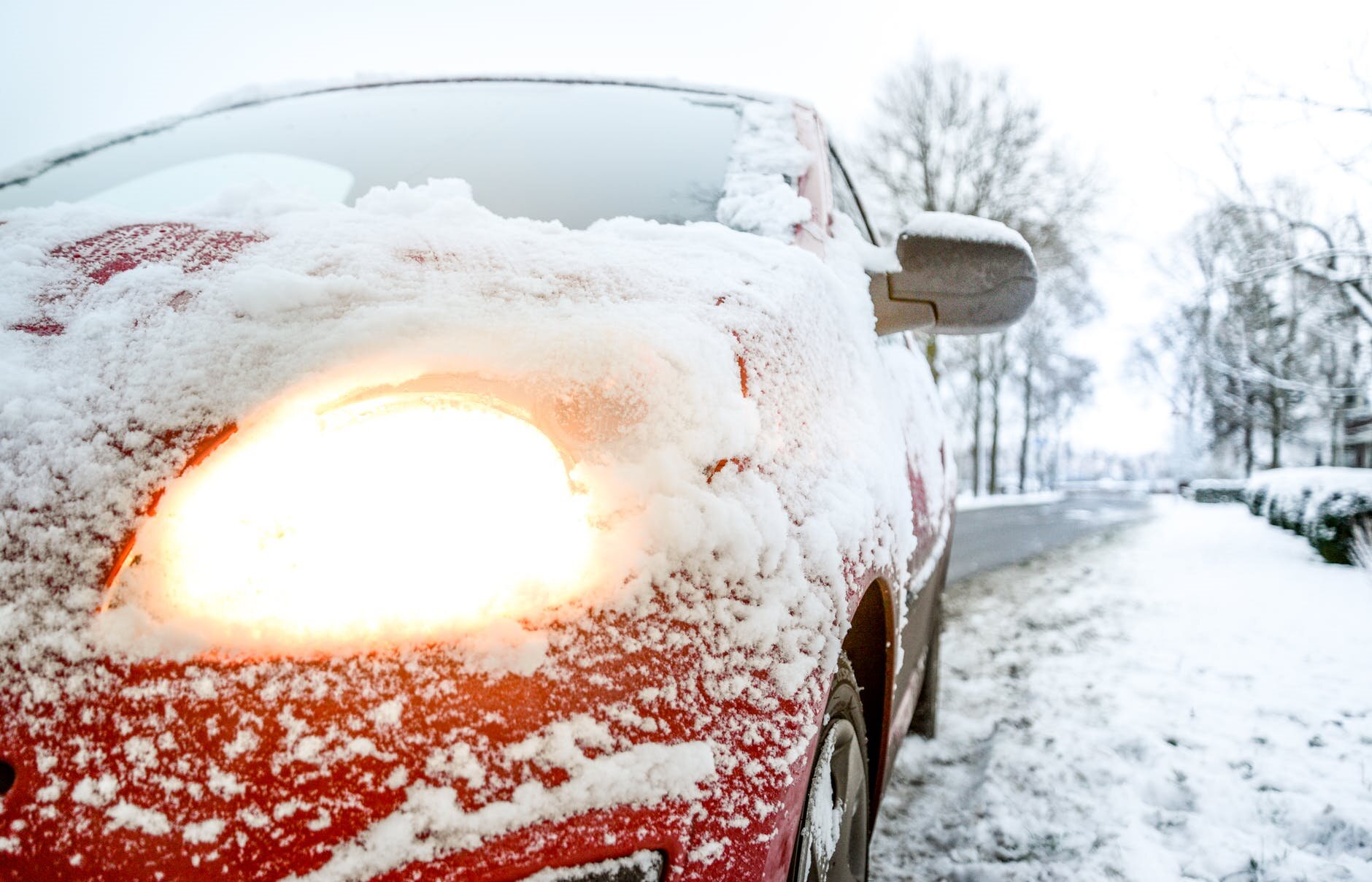Remove Snow from Your Car

Remove Snow from Your Car
Nothing’s worse than having to wake up early on a snow day to clear the buildup off your car. But if you’ve got to do it, you might as well do it right and do it fast. Here’s how.
Clear the snow from around your vehicle
-
Before you tackle accumulations on the windows, check to see that the tailpipe is free of snow. Snow covering your tailpipe could lead to carbon monoxide buildup in your car. After that, turn on the car and run the defroster. It may take five minutes or more to warm up the car and start the melting process. Clear snow from the roof, hood, and trunk lid while you wait.
-
Next, clear the side windows and rear windows. Do the windshield last to give the defroster more time to start melting the ice.
-
Don't forget to clear your exterior mirrors, headlights, taillights, and turn signals. Your last steps: Clear off and dry your wiper blades and make sure your wiper fluid nozzles are clear. If your wipers are more than six months old or they're not clearing the windows properly, it's time to replace them.
Step 1: If you park your car in the driveway, prepare for the storm before it starts by backing out as close to the street as possible (without blocking the sidewalk, of course). That way, you’ll have less driveway to shovel out to get on the road.
Step 2: Shovel the wheels out before moving on to the rest of the driveway. While you’re focusing on the lower half of the car, check that your tailpipe is clear of snow. A blockage could cause deadly carbon monoxide gas to fill the interior once the car is turned on.
Step 3: Grab a foam brush or non-abrasive snow broom and start removing snow from the car gently. Common damage from improper snow removal are scratches in the paint. These could be light or very deep depending on the situation. A nylon brush for example over the paint may leave light scratches that will be visible once the car is clean on a sunny day. Remove the snow with a shovel—I’ve seen it done—and you’re at risk for a very deep scratch that is either beyond a simple repair or would require a repaint.
Step 4: Start from the roof of the car and work your way down to the windows, hood, trunk, rear, and front lights. Pull the snow off the car, don’t push it. And keep your swipes in a straight line. That way, if an accidental scratch does occur, it will be less apparent.
Step 5: Don’t feel you need to get every last bit of snow off the car. It’s alright to turn on the heat and defroster and let modern technology do the rest. If it doesn’t clear off, though, you’ll want to get back outside and finish the job. Driving with snow on the car is dangerous (and in many cases illegal).
Watch for fog buildup on the interior windows
-
Sometimes your visibility can be hampered from inside the car. Always keep the air vent set to "fresh" rather than "recirculate," which can contribute to foggy windows. Your vehicle's defroster can help reduce the problem, as can opening your windows slightly. For best results, use your air conditioner. Air conditioners are designed to remove moisture from the air, and they can do that job even when the heater is on. Finally, keep a clean microfiber cloth in the car to clear stubborn foggy spots.
-
The driver and passengers should shake off as much snow and moisture from their clothes and shoes as possible before entering the car. This lessens the moisture level in the carpeting and upholstery and helps prevent fog buildup.
-
Also, clean your interior windows at least once a week during the winter. Over time, the film can build up on windows, increasing the potential for fogging. Your local automotive supply store also carries products that you can apply to reduce interior fogging.
